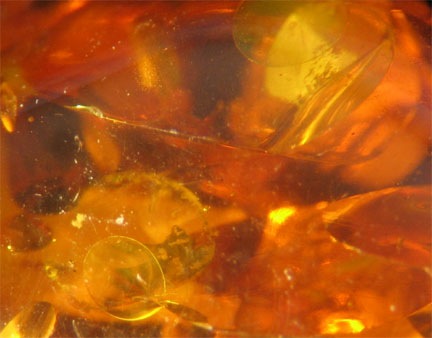|
Synthetic: Imitation
Identification Tools Required: Magnification, glass of water and salt.
How to Identify:
 Primary Test: Magnification of this material will show significant stress fracturing from the formation of the plastic imitation material. You should remember that we are talking about an imitation here and not a true synthetic or natural amber that has been treated. While a cursory look at this material may appear to be natural, 20x to 30x magnification will show internal features more like plastic than anything you will see naturally. Primary Test: Magnification of this material will show significant stress fracturing from the formation of the plastic imitation material. You should remember that we are talking about an imitation here and not a true synthetic or natural amber that has been treated. While a cursory look at this material may appear to be natural, 20x to 30x magnification will show internal features more like plastic than anything you will see naturally.
Secondary Tests: For loose beads or imitation amber “gems” a glass of water and a few spoons of salt can serve to separate the natural from imitation. True amber will sink in fresh water and float in salt water due to the specific gravity of the salt water being higher. To test simply put the amber into fresh water and slowing stir in salt. If the amber eventually floats to the surface you will most likely have natural amber, all other tests being considered. If the stone sinks and stays at the bottom of the glass after adding salt, it is a strong indicator of a plastic imitation.
Repair and Setting: Absolutely no heat should be applied to this material as melting will occur. No cleaning in ultrasonic or with cleaning solutions due to porosity.
To learn more about Created and Treated Gemstones, we invite you to visit:
|